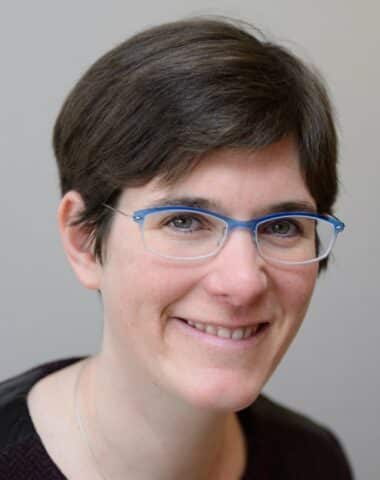Digital twins and prevention: a new era in medicine
- Digital twins are being developed in the healthcare sector to personalise and predict care based on patient data.
- France has long neglected preventive healthcare, favouring a curative system that “cures” rather than “prevents”.
- There are two types of prevention: primary (to avoid catching the disease) and secondary (to stop or slow down its development).
- Dassault Systèmes has launched the MediTwin project to create digital twins in oncology, neurology and cardiology to guide medical decisions.
- Digital twins can revolutionise the prevention of diseases such as Alzheimer’s, enabling early diagnosis and personalising treatments based on predictions from digital models.
Digital twins are gaining ground in the industrial world. The doors that this kind of tool opens up allow it to be extended into the field of healthcare; in particular with the use of digital lungs for personalised care. Being able to model an organ, personalise this model using patient data, and simulate its functioning could lead us to plan, anticipate and predict its development and ageing.
After all, as Claire Biot, Vice-President of the Health Industry at Dassault Systèmes, rightly points out, “today, by having the digital twin of a Rafale, as well as lots of flight data – the equivalent of biomarkers in aeronautics – we can carry out predictive maintenance in operation. This means moving from the digital twin of a concept, the aircraft, to the personalised digital twin of each Rafale in operation.”
This raises the question: what role can digital twins play in preventive healthcare? A question that was at the heart of the discussions at the 5th seminar of the Polytechnique health group, coordinated by the Centre de recherche en gestion de l’École polytechnique (IP Paris), and led by Étienne Minvielle (CNRS Research Director)1.
Looking at the illness of tomorrow today
Health prevention is often seen as a subject that was neglected until recently. Stanley Durrleman, research director at Inria, is quick to point this out. “Talking about prevention is still uncommon in France, because first and foremost we have a care system rather than a health system.” In his opinion, the current motto in research is more along the lines of “better to cure than to prevent.”
At Dassault Systèmes, digital twins have been in use for some time. “Our ambition is to help people live healthier lives at a cost that is sustainable for healthcare systems, and we place digital twins at the heart of our strategy,” explains Claire Biot, “because they make it possible to represent the invisible and get several disciplines to work together.” A new project has been launched: “MediTwin was launched by Dassault Systèmes to create different digital twins in three therapeutic areas: oncology, neurology and cardiology,” she explains. “These digital twins will primarily be used for treatment or diagnosis, guiding medical decisions”.

There are two types of prevention: primary prevention (put in place to avoid catching the disease) and secondary prevention, which stops or slows down the development of the disease. Primary prevention applies in particular to communicable diseases, with condoms and quarantine as examples. It is therefore certain that, for certain diseases, primary prevention is complicated. The second form of prevention has a number of constraints, in particular the need for rapid diagnosis and long-term patient management. “How can I follow patients for decades to see if, in the end, my prevention measure was effective?” wonders Stanley Durrleman. This is where a digital modelling system that faithfully simulates the functioning of a personalised biological system using patient data comes into its own.
Alzheimer’s disease
When it comes to illustrating the complementarity between prevention and the predictive algorithmic systems proposed by digital twins, Stanley Durrleman considers Alzheimer’s disease to be the prime example. Alzheimer’s disease is currently not far behind cancer as one of the biggest areas of medical research. “Despite colossal investments in research, we haven’t had a positive clinical trial for this disease for 20 years,” explains the researcher. “And practitioners still have virtually nothing to prescribe to their patients” [editor’s note: the drug in question is currently only available in the United States, and the application to market it in Europe is still being examined by the authorities].
This treatment targets the accumulation of amyloid plaques in the patient’s brain, which begins 10–15 years before the first symptoms of the disease appear. “However, the effects of the treatment on the patient’s cognitive decline remain relatively minor,” he admits. “The change in our treatment plan is substantial. We are no longer looking for drugs to cure the disease, but rather to prevent it.”
It is therefore important to understand how this disease develops and what the first signs are, in order to make an early diagnosis. To this end, Stanley Durrleman’s research team has established predictive models – digital twins – that can determine the course of the disease in different people. After presenting this model, Claire Biot asked: “Are we ready for mass-testing for Alzheimer’s disease?” Stanley Durrleman replies that there is still progress to be made. “For a non-communicable disease, it’s more accurate to talk about screening,” explains the researcher. In general, for this type of illness, the patient will a doctor following the first symptoms.
Identification therefore depends on the patient taking action, and this first step must not be missed. “Given the issues we have already discussed, I think there is still a lot of work to be done to improve the detection of cognitive disorders in the general population,” he concludes. One of the areas to be developed would be the identification of biomarkers specific to the development of Alzheimer’s disease. However, just as the accumulation of amyloid plaques in a patient’s brain is not always synonymous with the first signs of the disease, prevention will always depend on our ability to predict.
These findings confirm that, even if questions remain, the digital twin is likely to play an important role in the coming years. It could herald a new form of health prevention, more algorithmic, more personalised and offering previously unimaginable detection capabilities.

















